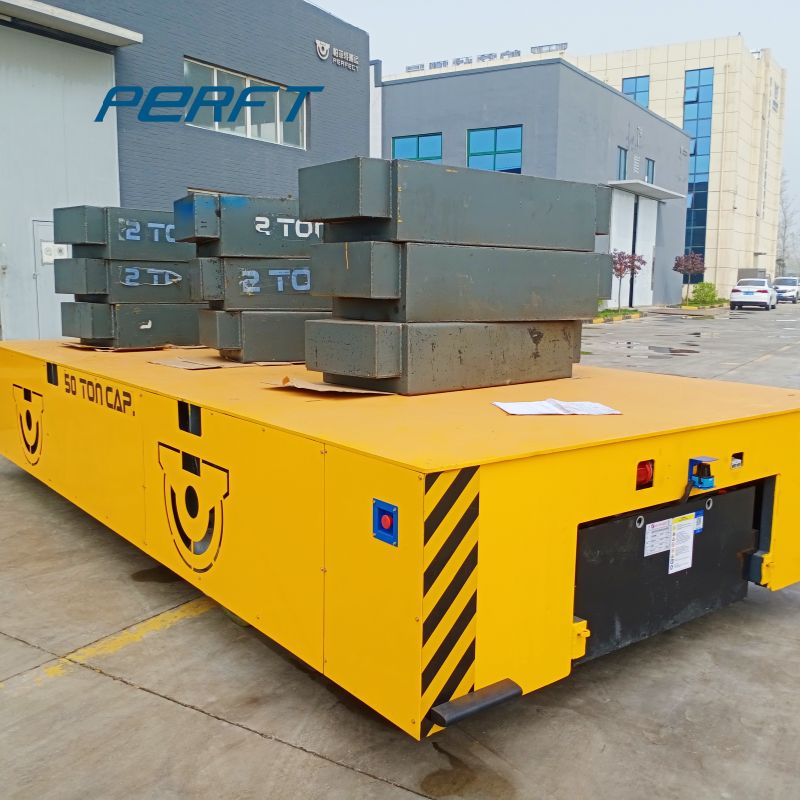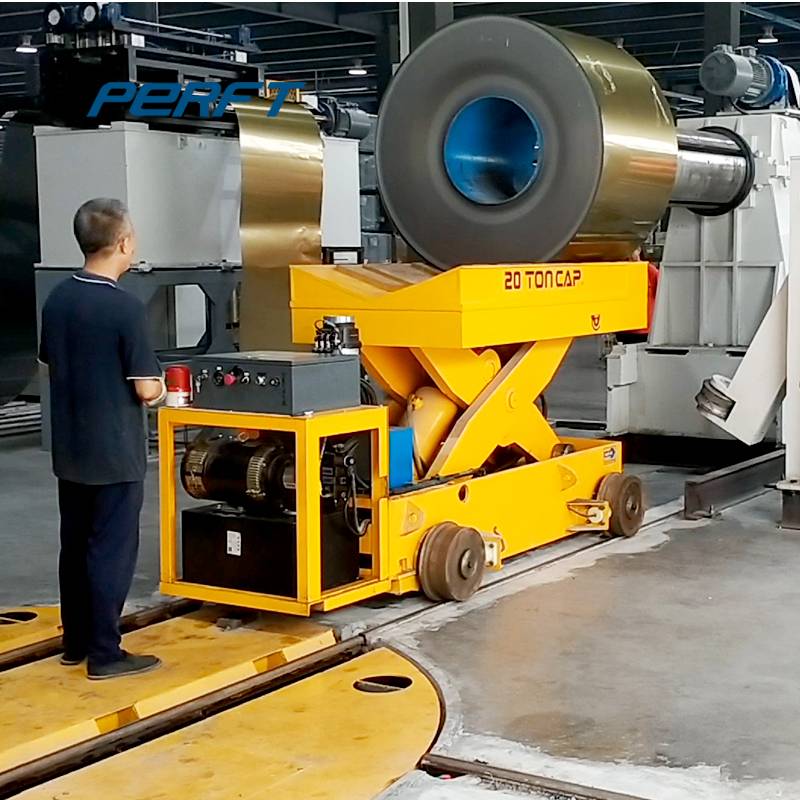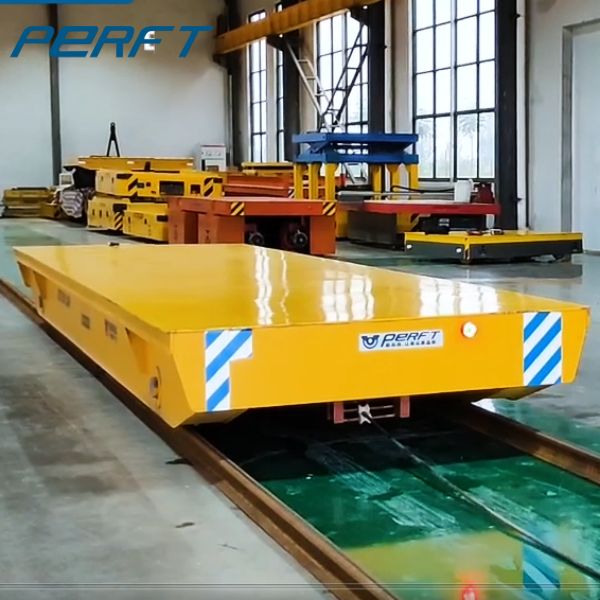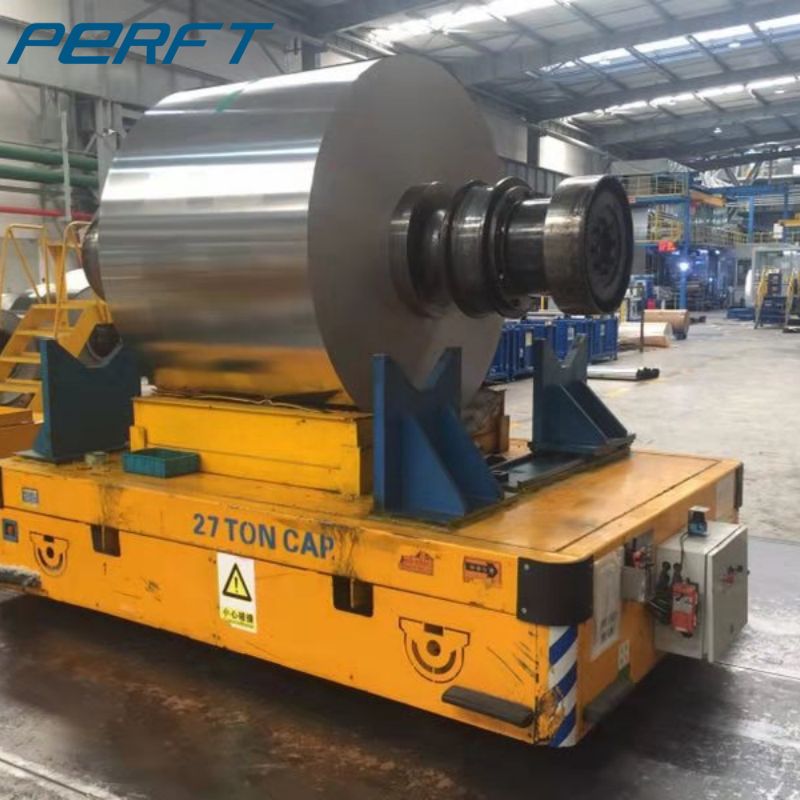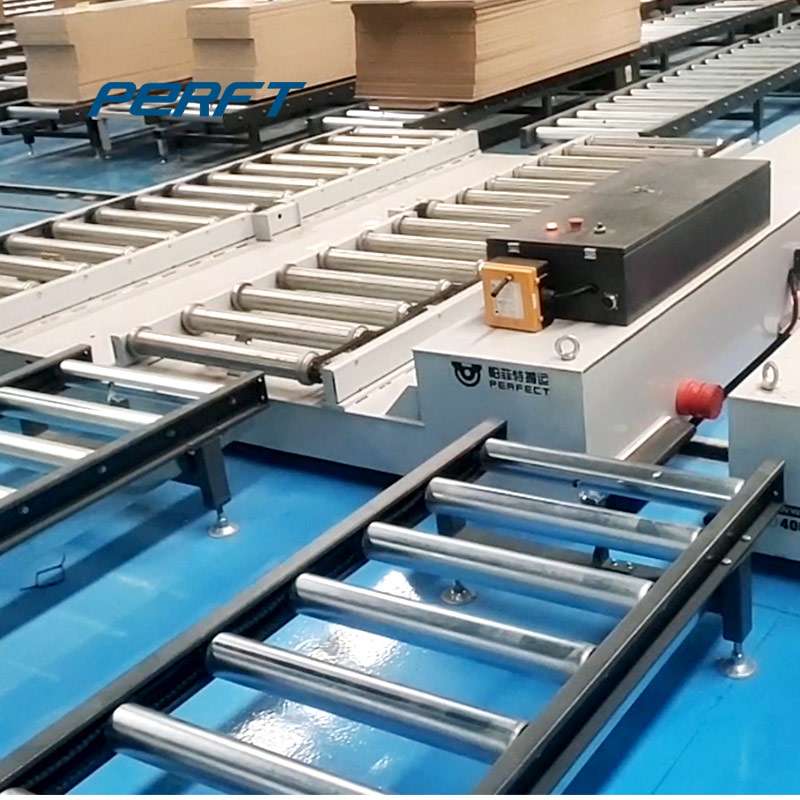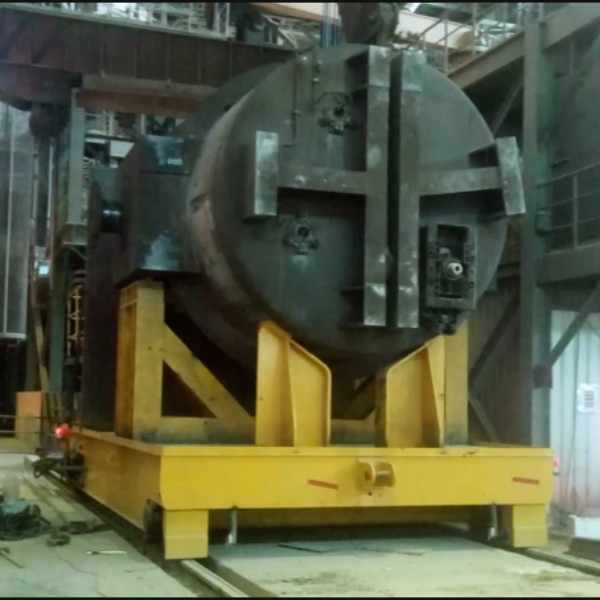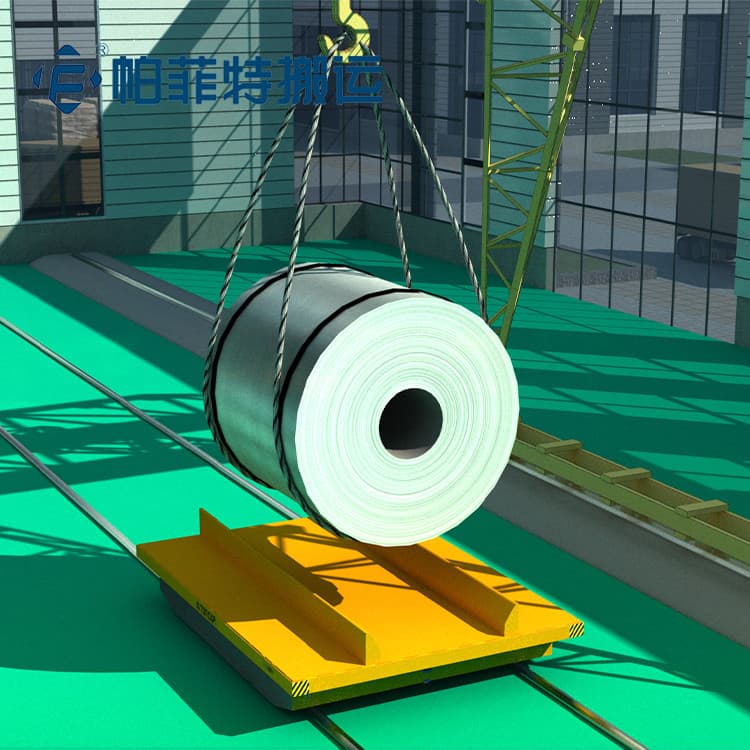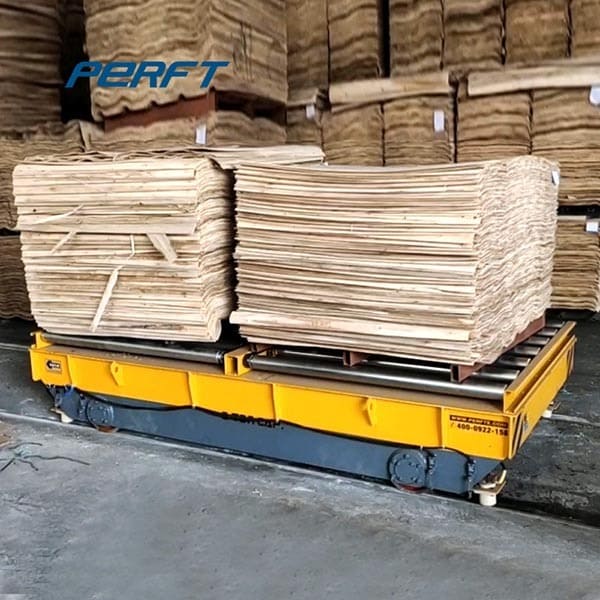Automatic Transfer Cart
What is the maximum load capacity of the automatic transfer cart?
The maximum load capacity of the automatic transfer cart is 500 tons.
Depending on the particular model and design, automated transfer carts may have a different maximum load capacity. These trolleys are made to handle a range of weight capacities to accommodate various applications and industries.
An automatic transfer cart’s maximum load capacity typically ranges from a few hundred pounds (or kilograms) to several tons. Before choosing a particular model, it is essential to ascertain the maximum load capacity requirements based on your unique circumstances.
The size and arrangement of the load platform, the type of wheels or casters used, the general design and construction of the cart, as well as the structural strength of the cart, are all elements that Perfect Transfer Cart Factory takes into account when determining the maximum load capacity.
The manufacturer does extensive testing and analysis throughout the design and production processes to guarantee the structural integrity of the trolley and its ability to securely support the specified maximum load capacity. To confirm the cart’s performance under various load circumstances, engineering calculations, stress analysis, and prototype testing are required.
It is significant to note that exceeding the advised maximum load capacity may have an impact on the trolley’s stability, mobility, and general safety. To maintain a smooth and safe functioning, the stipulated load capacity must be followed.
It is advised that you carefully consider your load requirements when choosing an automatic transfer trolley and choose a type that has the maximum load capacity suitable for your particular needs. For thorough details on maximum load capacity and to assist you in making an informed choice, contact us right away.
Does the transfer cart have safety features such as emergency stop buttons and obstacle detection sensors?
Sound and light alarm device
Emergency stop button
Front and rear area scanning type obstacle detection sensor
Touch edge switch double protection
Radar range control: 0.3-3m, anti-collision fixed range locking self-stop
Warning signs posted on the body
External physical protection
What is the range or battery life of the automatic load transfer cart on a single charge?
An automatic load transfer cart’s range or battery life after a single charge relies on a number of elements, such as the type, battery capacity, load circumstances, topography, and operating parameters.
The range or battery life of an autonomous load transfer cart might vary considerably when these considerations are taken into account. When compared to larger transfer carts made for heavy-duty applications, which may have a battery life of 8 to 16 hours or more in addition to a specific type of battery backup that can be offered to extend the operating time of the transfer cart, smaller transfer carts with lower load capacities may only have a few hours of battery life.
It is crucial to consult the manufacturer’s specs and technical documents while assessing a certain transfer cart model. Typically, these documents will give thorough details on battery capacity, expected range, and operating circumstances to meet the required battery life.
Of course, regular battery maintenance, periodic charging, and attention to battery use and charging standards are recommended to ensure optimal battery life and to ensure the automatic load transfer car operates as efficiently as possible.
Can the automatic rail transfer cart be customized to handle specific load sizes or shapes?
Yes, automated transfer carts are frequently adaptable to a particular load size or shape. Transfer carts‘ customization possibilities enable them to carry a variety of loads efficiently and increase overall operational effectiveness. The following list of adjustable options:
The size of the load platform can be altered to match the length, width, and height of a particular load. should make sure the cart offers the load enough room and support without sacrificing stability.
Load capacity: To ensure safe transport, the appropriate structural reinforcements, wheels, and axles are made to order according to the load weight and the maximum load capacity required.
Securing mechanisms can be added to a load, such as rails, clamps, or straps, to prevent it from shifting or slipping during transit, depending on the nature of the load. enhancing stability and safety while making sure the cargo isn’t damaged.
Load configuration: Customization can also take into account particular load orientations or combinations. For instance, the transfer cart can be fitted with adjustable fixtures or features to accommodate a load that needs a precise tilt, rotation, or positioning.
Load sensors and monitoring systems: For some applications, customization can involve integrating load sensors or monitoring systems to deliver real-time data on the weight, balance, or other pertinent properties of the load. This makes it possible to handle loads accurately and improves safety.
Please inform us about your exact customization requirements, and we will offer our experience, direction, and engineering help to evaluate your load-handling requirements and suggest the best possible customization alternatives. Make that the automatic rail transfer cart works properly and satisfies your needs.
How easy is it to operate the automatic trackless transfer cart? Is any special training required?
Automatic trackless transfer carts are made to be simple to handle and maneuver. They have an easy-to-use control system that makes operating simple. Operation is divided into several key areas:
Basic operations including start, stop, forward, and reverse as well as speed modification are often managed by the remote control handle or joystick control.
User-friendly controls on a touch screen or control panel, for example, would make it simple to adjust the cart’s travel trajectory, route preferences, and other features.
Controls that are easier to use and understand are typically built for trackless transfer carts. Typical controls for basic operations like start/stop, forward/reverse, and speed adjustment include straightforward switches, buttons, or joysticks.
Minimal special training needed: Automatic trackless transfer carts often require little special training due to their user-friendly design. Operators can pick up successful cart operations fast if they have a basic awareness of the controls and safety protocols.
Operator safety training: Operators must receive the necessary safety training. This covers knowing how to stop in an emergency, being mindful of nearby workers, using load securement techniques, and following general safety rules for operating a trolley safely in a work environment.
Can guarantee that automated trackless carts function smoothly and efficiently while maintaining a safe work environment by adhering to the manufacturer’s instructions and giving operators fundamental training and safety awareness.
Are there any additional accessories or attachments available for the automatic load transfer cart?
Automatic load transfer carts frequently come with extra attachments and accessories to improve their functionality and satisfy certain needs. To suit the requirements of the application or sector, these attachments and accessories can be chosen or customized.
Mechanisms for securing the cargo: The transfer cart can be equipped with attachments to secure the load during transport and stop movement or damage, such as rails, clamps, or straps.
Transfer carts are available with towing attachments that let other vehicles or pieces of equipment pull or tow them, giving users more mobility options.
Forklift pockets: A forklift or other lifting equipment can be used to effortlessly lift and carry some transfer carts that have been equipped with forklift pockets.
Lifting platforms or lift tables: Automatic Load Transfer car can be configured with a lifting platform or lift table attachment for applications that need loading and unloading at various heights. This permits level changes and makes transfers between them safe and effective.
Mechanism for managing tilt: Transfer carts may come with a tilt mechanism to help with specialized operations like tipping or dumping.
Customized load platforms: To accept unusual load shapes, sizes, or materials, the transfer vehicle’s load platform can be modified based on the needs by using particular configurations, surfaces, or fasteners.
Remote control system: Transfer cart can be equipped with a remote control system that gives the driver wireless control over how it moves and performs. When the operator has to keep a safe distance or get a better perspective of the activity, this is especially helpful.
Sensor systems: The transfer vehicle can incorporate sensor systems, such as proximity sensors or laser sensors, to offer obstacle identification, collision avoidance, or proximity monitoring for increased safety.
Data logging or telemetry systems: In some situations, data logging or telemetry systems can be installed on a transfer vehicle to capture and communicate information such as the weight of the load, the distance traveled, or operating characteristics for monitoring, analysis, or system integration.
It is significant to remember that depending on the manufacturer and transfer vehicle model, the availability of particular accessories and attachments may vary. Consult explore options right away to discuss your unique needs and customize your transfer vehicle when thinking about adding extra equipment or attachments.
Can the automatic transfer carts handle both indoor and outdoor environments? Is it suitable for our specific industry or working conditions?
Indoor environments: The majority of automatic transfer carts are ideally suited for indoor settings like factories, warehouses, and assembly lines. They are made to move through typical doorways, aisles, and hallways that are present within. These carts are frequently electric, quiet, emission-free, and appropriate for interior use.
Outdoor settings: Some automatic transfer carts have been adapted or developed expressly to work outside. To survive external circumstances including rough terrain, bad weather, and temperature changes, these carts frequently have extra features. Outdoor transfer carts may have weatherproofing to guard against moisture or dust, wider wheels or tires to improve grip and stronger frames.
When evaluating the suitability of a transfer trolley for a particular industry or working conditions, the unique requirements of that applied industry need to be considered. For example:
Forwarders used for construction may require heavy construction, all-terrain capability, and protection from dust, dirt and rough handling.
Automotive: Automotive transfer trucks may require features such as non-slip surfaces, load-securing mechanisms, and compatibility with assembly line equipment.
Ports and logistics: Transfer trucks for ports and logistics may require high load capacity, the ability to handle uneven surfaces, and integration with container handling equipment.
Tell us about your particular application area and get a professional answer on whether it’s right for you!
